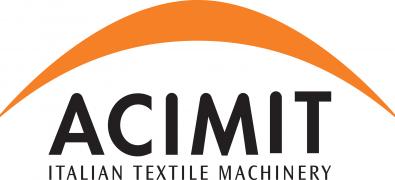There’s innovation in the future of the Italian textile machinery, thanks in part to the stimulus provided by Industry 4.0, as stated at the Assembly held by the industry association ACIMIT by President Raffaella Carabelli, presenting the figures for the sector. In 2016, Italy’s production of textile machinery rose 5% compared to 2015, thereby reaching a value of 2.7 billion euros. During the same period, exports grew by 4%, amounting to 2.3 billion euros. This reinforces the positive trend already observed in 2015, and is the result of a substantial confirmation of the state of foreign markets, as well as growth for Italy’s domestic market (indeed, domestic sales of Italian manufacturers increased 14%). The various incentives implemented by the Government’s policy no doubt have played an essential role in kick starting domestic demand.
“The measures linked to Industry 4.0 are the main tools that will allow our industrial sector take a step forward,” affirmed Raffaella Carabelli. “Italian manufacturers must take advantage of the evolution in digital technology to further boost production efficiency and competitiveness globally.”
For the textile sector, and machinery manufacturers especially, Industry 4.0 represents a challenge aimed at stimulating dialogue between businesses operating within the sector. But is the textile machinery sector ready to take on these challenges? To outline the latest state of the art trends and track possible future scenarios, ACIMIT quoted a study of its own associated members, conducted by Rina Consulting SpA and presented at the General Assembly. The study points out the high level of awareness by Italian manufacturers regarding the latest technologies and their adoption (particularly cloud and cybersecurity technologies), with positive outcomes on productivity.
“Our survey,” concludes ACIMIT’s president, “undoubtedly highlights the need to better understand how new technologies can be proposed to industry, and specifically for the textile sector. New trends in terms of demand, which are well synthesized by the phenomenon of fast fashion, and characterized by the speed of time to market, require production processes that are just as swift, and capable of providing an immediate response to consumer needs. The digitalization of our associated manufacturers can thus trigger a further competitive advantage.”
The ACIMIT assembly also took care of internal business by renewing its administrative charges, appointing Alessandro Zucchi to ACIMIT’s presidency, succeeding Raffaella Carabelli.
For photos from the Association's June 2017 Assembly click on this link.
For more information kindly contact the following at ACIMIT:
ACIMIT
Economics-Press,
Phone: +39024693611
e-mail: economics-press [at] acimit.it
Background on the Italy’s textile machinery industry and ACIMIT
ACIMIT represents an industrial sector comprising around 300 manufacturers (employing close to 12,000 people) and producing machinery for an overall value of about 2.7 billion euros, with exports amounting to more than 85% of total sales. Creativity, sustainable technology, reliability and quality are the characteristics which have made Italy a global leader in the manufacturing of textile machinery.


























